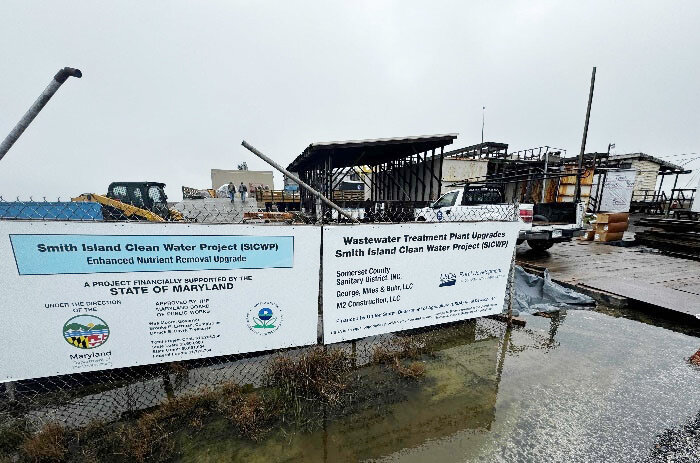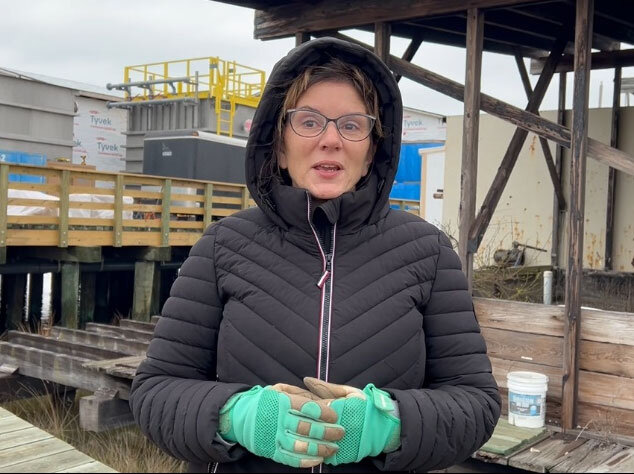Investing in Wastewater Infrastructure is Key to Preserving Smith Island, Maryland
For the people living on Smith Island, the water matters.
But it’s about more than the beautiful views of the Chesapeake Bay from the picturesque island 10 miles from the mainland. The …

You must be a member to read this story.
Join our family of readers for as little as $5 per month and support local, unbiased journalism.
Already a member? Log in to continue. Otherwise, follow the link below to join.
Please log in to continue |
Investing in Wastewater Infrastructure is Key to Preserving Smith Island, Maryland
For the people living on Smith Island, the water matters.
But it’s about more than the beautiful views of the Chesapeake Bay from the picturesque island 10 miles from the mainland. The multi‐generational residents depend on the surrounding Chesapeake Bay for their livelihoods. For many, crabbing, oystering, and ecotourism are what puts dollars in their bank accounts, and food on their tables.
In rural communities like Smith Island, located in and along the Chesapeake Bay, aging wastewater facilities are in need of upgrades. Not only can this be an expensive problem for towns with small populations, but without the critical upgrades, the threat of combined sewer overflows from more frequent weather events and climate change could contribute to pollution of the Chesapeake Bay.
Water levels in the bay have already risen one foot, with a predicted increase of 1.3 to 5.2 feet in the next 100 years. Added together, these factors create significant challenges that threaten the way of life for more than 18 million people living in, and depending on, the Chesapeake Bay watershed.
So, what is being done to help these rural communities protect the environment and preserve a way of life that impacts so many?
USDA Rural Development and partners are answering the call by investing in state‐of‐the art, modern wastewater treatment facilities in communities like Smith Island and many others located throughout the Chesapeake Bay watershed.
Smith Island Wastewater Treatment Facility
Smith Island’s wastewater treatment facility consisted of two pump stations, serving the three communities that make up Smith Island: Ewell, Rhodes Point, and Tylerton. After four decades and prolonged exposure to the elements from moist marine air, the components of the wastewater treatment facility began to corrode, break down, and fail. This left the surrounding bay and wildlife vulnerable to combined sewer overflows.
Federal, state, and local agencies collaborated on a solution: a new, modern wastewater treatment facility. Through the Water and Waste Disposal Loan and Grant Program, USDA Rural Development provided the community with $83,000 in loan, and $5,000,000 in grant funds, with other partners providing the balance, to help the community afford the $22.3 million Smith Island Wastewater Treatment Facility.
Expected to be completed next year, the new wastewater treatment facility will help mitigate overflow concerns and improve water quality in Merlin Gut and Francis Gut within the Chesapeake Bay Watershed.
Peter Bozick, Executive Vice President of George, Miles & Buhr, LLC, the engineer and architecture firm designing the new facility said, “The island is sinking slowly due to climate change and rising sea levels, and the former infrastructure was susceptible to flooding. In addition to replacing the treatment facility with new materials that can resist corrosion, we raised the pumping stations about five feet higher in order to be above the 100‐year flood zone.”
The new treatment facility will significantly reduce the nutrients nitrogen and phosphorus to lower levels. This is important because excessive levels of these nutrients contribute to harmful algae growth, which can block sunlight and deplete the amount of oxygen in the water.
This significant investment in improving infrastructure on Smith Island is contributing to a positive outlook for the future of Smith Island.
Life on Smith Island
Thirty‐five years ago, Laura Evans met her husband Buddy, a 13th‐generation island resident and waterman, and joined him in island living.
Buddy is just one of many Watermen who earns a living from the waters of the Chesapeake Bay. When we spoke to them on their boat, the Lady Laura, he had just returned from catching his quota of crab and was delivering his bounty to a restaurant on Crisfield.
The couple shared their dream of living and raising a family on the island, which has a year‐round population of under 300. She says about raising children on the island, “They have a very unique childhood. It’s a fun lifestyle.”
The island had a school that offers classes for children aged Pre‐k through 7th grade. It closed last year, but due to a slight resurgence of families with children beginning to move the island, it is anticipated to reopen. Those in grades 8 – 12 take the school boat to Crisfield for high school each day.
Laura has worked in real estate the past four years. With a love for Smith Island, she wanted to sell some of the abandoned houses to people who wanted to purchase them and renovate and remodel the worn and weathered historic homes. She says, “We love to see the lights on. We love to see the houses fixed up and the yards taken care of.”
Asked about how the investment in the wastewater treatment facility might help those who want to call Smith Island home, Laura says, “We can’t thank USDA enough. It so important for a new homeowner to know about infrastructure, to know that they can depend on certain utilities. It gives them peace of mind.”
“Smith Island offers a sense of belonging. It’s a sense of home.”’
Looking to the Future: Moving to Smith Island
On a visit to Smith Island with Laura as their realtor, Sharon Abbot and her husband Kevin, fell in love with the charming historic island. The wild growing asparagus and beautiful bay views drew them in. But it was the federal and partner investments in the infrastructure that provided the reassurance that convinced them to stay.
“It was because of all of the investments from the state, county, and federal government that we decided to build here. If this wasn’t happening, we probably would have through twice about investing our savings, our retirement, and our future in moving here. This is why we are here.”
Sharon, a nurse working remotely from the island, talks about how other residents on the island will benefit from the new wastewater treatment facility. “There are some residents on the island who want to grow their own oysters and haven’t been able to because of the conditions of the water. This new infrastructure will help make this more feasible by helping to keep the water cleaner.”
As for those who want to move to Smith Island, Sharon has no reservations.
“What’s not to love? The minute we stepped off onto the island my husband and I looked at each other and said this is it! We found it. We felt like we’d been searching for this all of our lives and we feel blessed to be here.”
In small rural communities everywhere, the water matters. And the infrastructure matters, because the water and the health of the ecosystems and animal and plant life are vital to the economy and quality of life for people everywhere. That’s why USDA Rural Development will continue to be a dedicated partner in rural America, ensuring people have the tools they need to protect and preserve the environment for future generations.

















